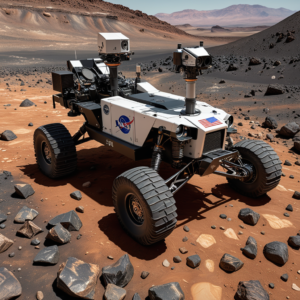
Introduction:
SpaceX has added another landmark achievement to its growing list of space innovations. In a new partnership, Lunar Outpost has selected SpaceX’s Starship to deliver its Eagle lunar rover to the Moon. This deal marks the second commercial use of Starship for lunar missions, further solidifying SpaceX’s role as a key player in NASA’s Artemis program and beyond. The mission aligns with efforts to establish sustainable human operations on the Moon while supporting NASA’s ambitious goals for lunar exploration.
1. The Mission: Lunar Outpost’s Vision for Moon Exploration
Lunar Outpost’s Eagle rover, part of NASA’s Lunar Terrain Vehicle Services (LTVS) contract, is designed to advance mobility and infrastructure on the Moon’s surface. This versatile rover will play a critical role in moving heavy cargo, facilitating astronaut mobility, and supporting infrastructure for long-term lunar presence. Testing of its design, including human factors evaluations, has been underway at NASA’s facilities in Houston.
2. Starship: A Lunar Workhorse
SpaceX’s Starship has proven itself as the go-to vehicle for ambitious lunar projects. After a successful series of test flights, Starship’s capabilities have captured the confidence of commercial partners and government agencies alike. Its versatility, massive payload capacity, and reusability make it ideal for delivering equipment like the Eagle rover to the Moon.
This new mission builds on SpaceX’s earlier selection by NASA for the Artemis 3 mission, which plans to send astronauts to the Moon as early as 2026. With this agreement, Starship is poised to support a variety of lunar initiatives, demonstrating its scalability and reliability.
3. Collaborative Innovation in Space
Lunar Outpost is collaborating with several industry leaders, including Leidos, Goodyear, and General Motors, to develop its lunar rover. This collective effort underscores the growing importance of private-public partnerships in space exploration. The goal is not only to deliver essential tools for Artemis but also to prepare for a sustainable human presence on the Moon, focusing on resource utilization and scientific exploration.
4. What This Means for Lunar Exploration
The partnership between SpaceX and Lunar Outpost represents a leap forward for commercial space operations. It highlights the increasing reliance on private companies to pioneer technologies that complement governmental programs like Artemis. Such collaborations are expected to drive innovation, reduce costs, and accelerate humanity’s return to the Moon.
As SpaceX continues to secure contracts for Starship, the company cements its role in creating a sustainable infrastructure for lunar exploration—a critical step for eventual missions to Mars and beyond.
Conclusion:
The deal between SpaceX and Lunar Outpost illustrates the growing synergy between aerospace companies and space agencies. With the Eagle rover mission, both organizations contribute to a larger vision of sustained lunar presence and exploration. As Starship readies itself for this next milestone, it’s clear that the era of commercial space exploration is reaching unprecedented heights.
- Quick Links







